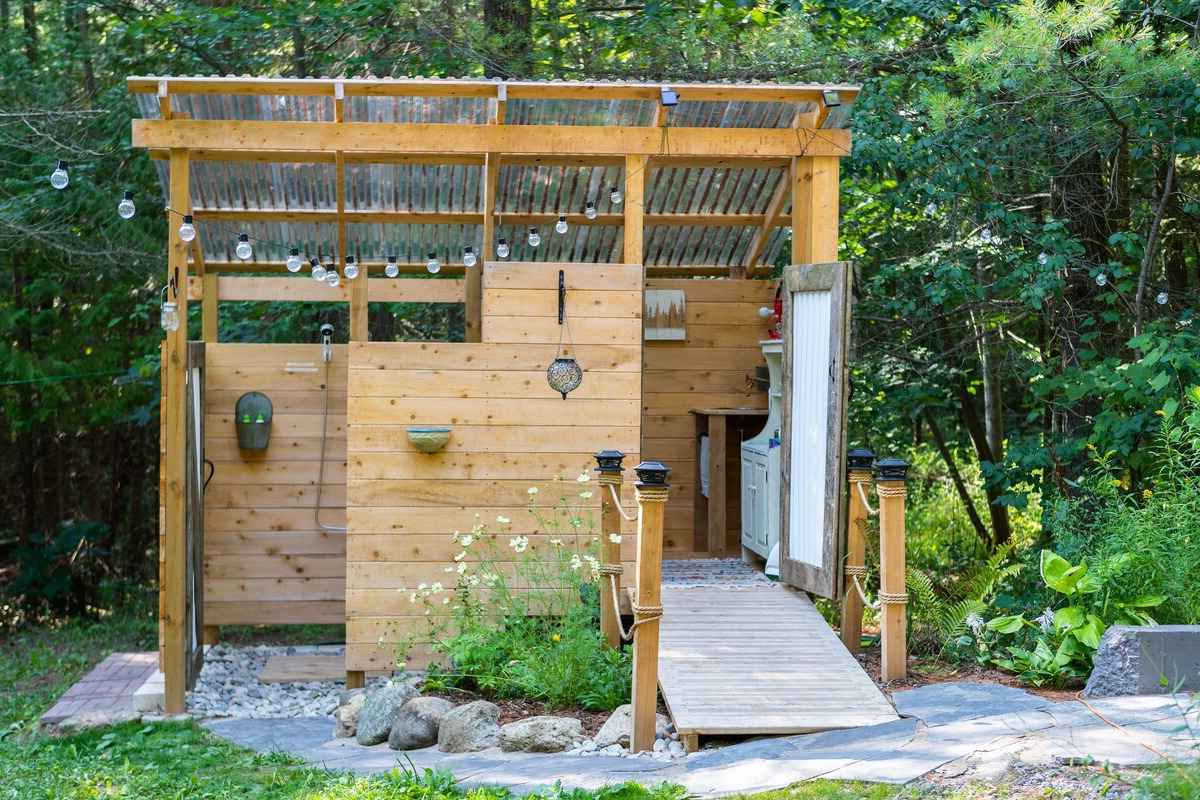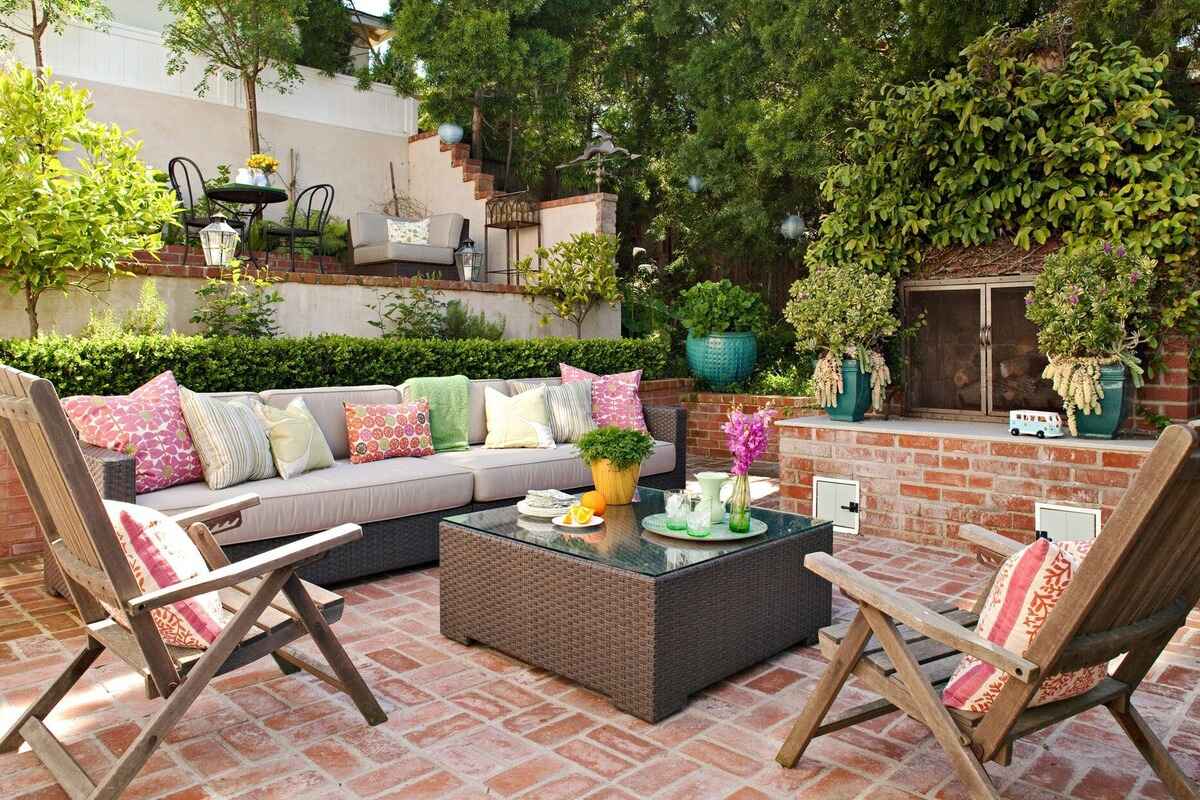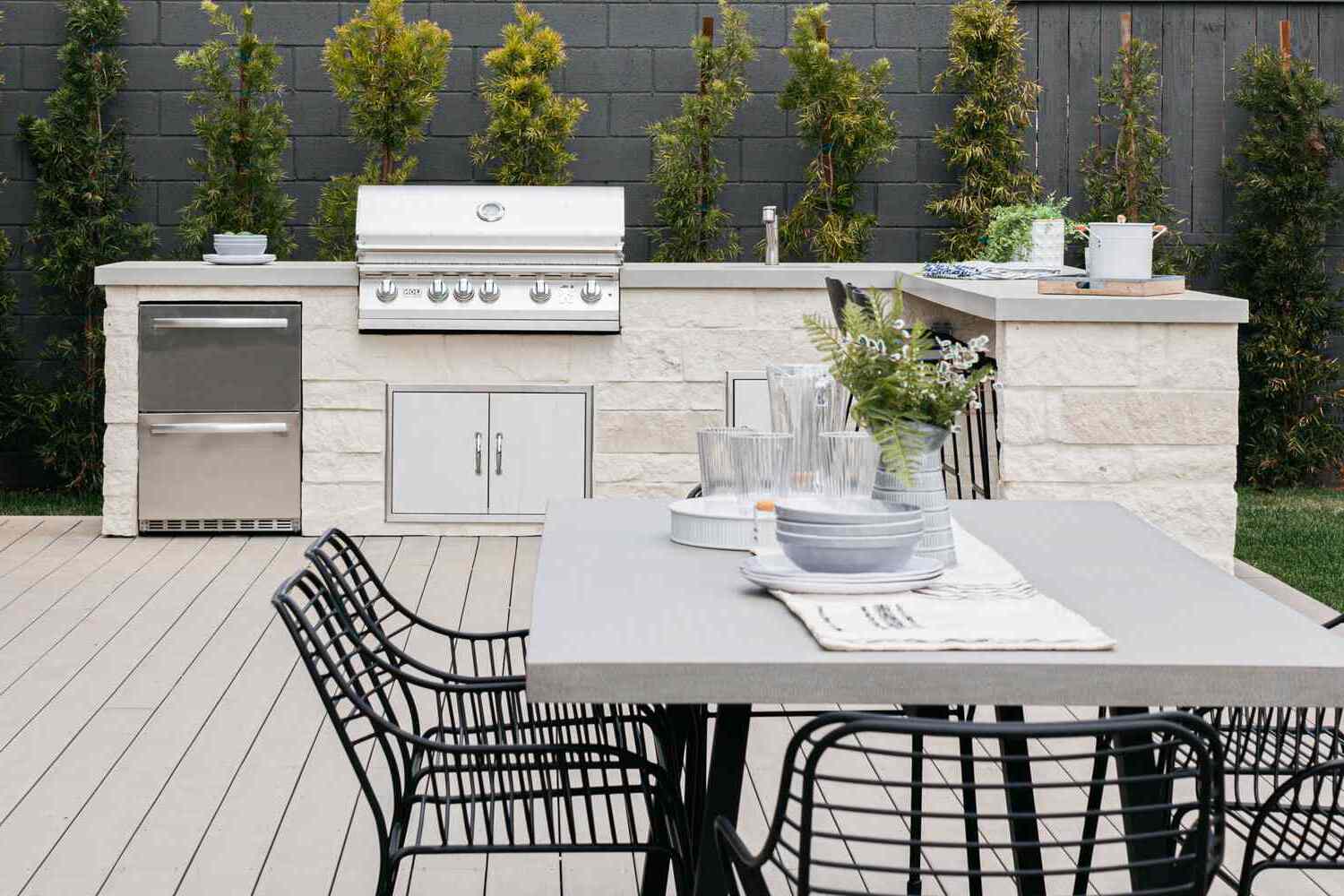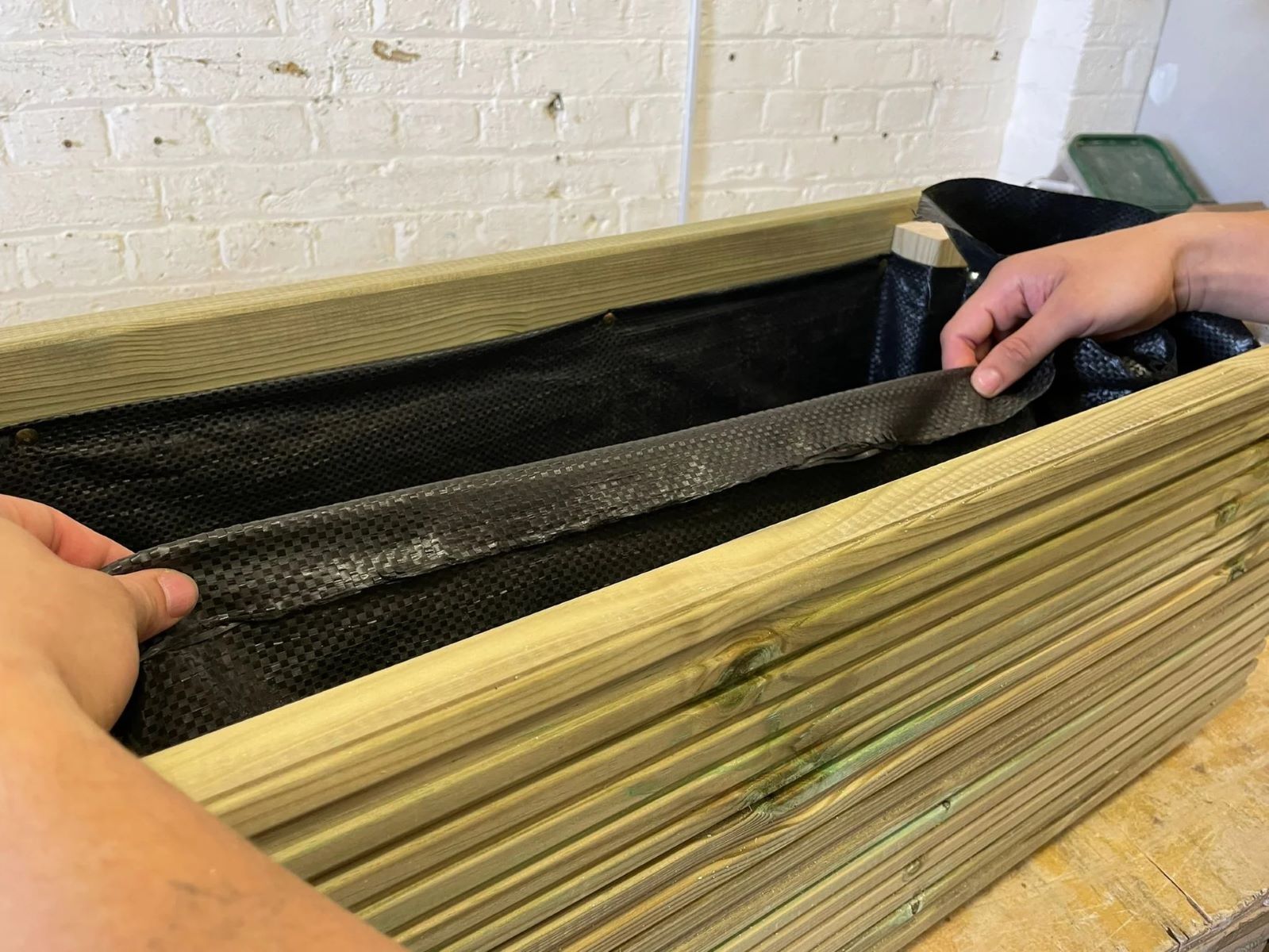Home>Create & Decorate>DIY & Crafts>DIY Koi Pond: Step-by-Step Guide To Creating Your Own Tranquil Oasis
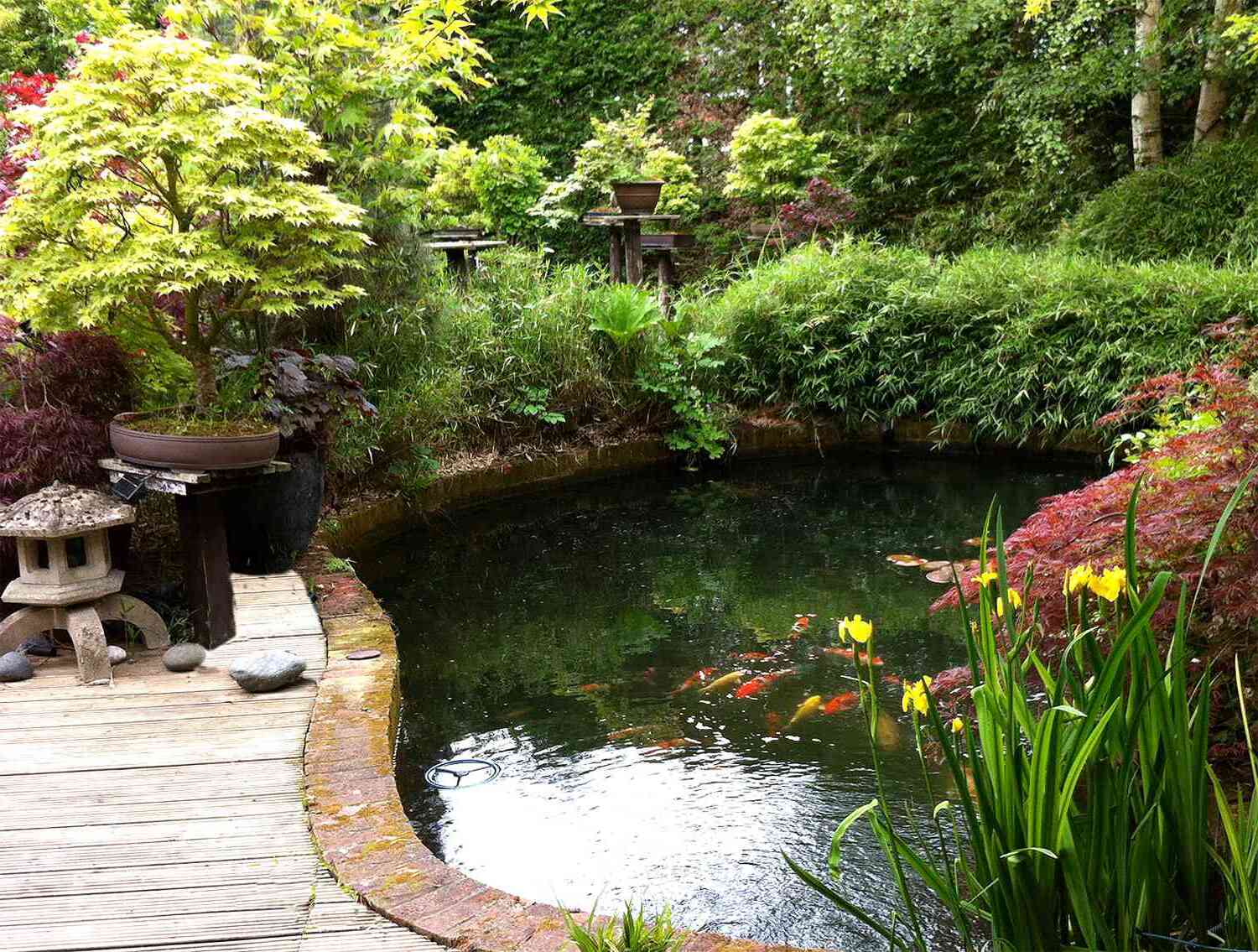

DIY & Crafts
DIY Koi Pond: Step-by-Step Guide To Creating Your Own Tranquil Oasis
Published: February 24, 2024

Senior Editor in Create & Decorate, Kathryn combines traditional craftsmanship with contemporary trends. Her background in textile design and commitment to sustainable crafts inspire both content and community.
Create your own tranquil oasis with our step-by-step DIY Koi Pond guide. Dive into the world of DIY & Crafts and bring serenity to your backyard.
(Many of the links in this article redirect to a specific reviewed product. Your purchase of these products through affiliate links helps to generate commission for Twigandthistle.com, at no extra cost. Learn more)
Introduction
Creating a serene and captivating koi pond in your backyard is a rewarding and fulfilling DIY project that brings nature's beauty to your doorstep. The harmonious blend of water, vibrant koi fish, and lush greenery can transform your outdoor space into a tranquil oasis where you can unwind and reconnect with nature. Whether you're a seasoned DIY enthusiast or a novice looking for a new and exciting project, building a koi pond can be an enriching experience that adds a touch of elegance to your home.
A well-designed koi pond not only enhances the aesthetic appeal of your property but also provides a soothing retreat where you can escape the hustle and bustle of everyday life. The gentle sound of water cascading over rocks, the graceful movements of colorful koi fish, and the vibrant aquatic plants create a captivating environment that promotes relaxation and rejuvenation.
In this comprehensive guide, we will walk you through the step-by-step process of creating your own enchanting koi pond. From meticulous planning and selecting the perfect location to the exciting moment of introducing koi fish to their new home, each stage of the journey is filled with creativity and anticipation. By following these detailed instructions and expert tips, you can embark on a fulfilling DIY adventure that culminates in the creation of a captivating aquatic haven in your backyard.
So, roll up your sleeves, unleash your creativity, and get ready to embark on an inspiring journey as we delve into the art of crafting a mesmerizing koi pond. Let's dive into the intricate details of planning, designing, and bringing to life a breathtaking aquatic sanctuary that will become the centerpiece of your outdoor landscape.
Step 1: Planning and Designing Your Koi Pond
Creating a stunning koi pond begins with meticulous planning and thoughtful design. This initial phase sets the foundation for a captivating aquatic environment that harmoniously blends with your outdoor space. Here's a detailed breakdown of the essential steps involved in planning and designing your koi pond:
-
Determine the Size and Shape: The first consideration is the size and shape of your koi pond. Take into account the available space in your backyard and envision the ideal dimensions for your pond. Consider factors such as the number of koi fish you intend to keep, the surrounding landscape, and any additional features you wish to incorporate, such as waterfalls or aquatic plants.
-
Select a Suitable Location: Carefully assess potential locations for your koi pond, considering factors such as sunlight exposure, proximity to trees (which can lead to debris falling into the pond), and visibility from your home. Ideally, the pond should receive a balance of sunlight and shade to support the health of the koi fish and aquatic plants.
-
Design the Layout: Sketch out the layout of your koi pond, including the placement of filtration systems, aeration devices, and any decorative elements such as rocks and water features. Consider the overall aesthetic you wish to achieve and how the pond will integrate with the surrounding landscape.
-
Research Local Regulations: Before proceeding with your design, research any local regulations or permits required for installing a koi pond. Some areas may have specific guidelines regarding pond depth, fencing requirements, and water conservation measures.
-
Budget and Materials: Establish a budget for your koi pond project and research the materials needed for construction. This includes pond liners, filtration systems, pumps, and landscaping materials. Consider the long-term maintenance costs as well, such as electricity for pumps and potential repairs.
By investing time and effort into the planning and design phase, you'll set the stage for a successful koi pond project that aligns with your vision and seamlessly integrates with your outdoor living space. With a clear plan in place, you can proceed to the next steps of bringing your tranquil oasis to life.
Step 2: Choosing the Right Location
Selecting the perfect location for your koi pond is a pivotal decision that significantly influences the overall success and enjoyment of your aquatic sanctuary. The ideal location not only enhances the visual appeal of your outdoor space but also plays a crucial role in the health and well-being of your koi fish and aquatic plants. Here's a detailed exploration of the key considerations when choosing the right location for your koi pond:
Sunlight and Shade
Assess the sunlight exposure in different areas of your backyard to determine the most suitable location for your koi pond. While ample sunlight is essential for the growth of aquatic plants and the overall ecosystem of the pond, excessive exposure to direct sunlight can lead to issues such as algae overgrowth and water temperature fluctuations. Aim for a balance of sunlight and shade, considering the natural shade provided by trees or the potential for incorporating shading elements into the pond design.
Proximity to Trees and Debris
Take into account the proximity of trees to the potential pond location. While trees can provide natural shade and enhance the aesthetic appeal of the pond, they can also pose challenges in terms of falling leaves, twigs, and other debris. Consider the maintenance implications of having a pond near trees and factor in the additional effort required to keep the water clear of organic matter.
Visibility and Aesthetics
Consider the visibility of the pond from your home and outdoor living areas. A strategically placed koi pond can serve as a captivating focal point, adding visual interest and a sense of tranquility to your surroundings. Additionally, think about how the pond will complement the existing landscape and contribute to the overall aesthetics of your outdoor space.
Accessibility and Safety
Ensure that the chosen location allows for easy accessibility for maintenance tasks such as cleaning, feeding the koi fish, and inspecting the equipment. Moreover, if you have children or pets, prioritize safety by selecting a location that minimizes the risk of accidental falls into the pond. If necessary, consider incorporating safety features such as fencing into the pond design to provide added peace of mind.
By carefully evaluating these factors and selecting a location that aligns with your vision for the koi pond, you can lay the groundwork for a captivating and harmonious aquatic environment that enriches your outdoor living experience. The process of choosing the right location sets the stage for the subsequent steps of bringing your koi pond to life, ensuring that it becomes a cherished centerpiece of your backyard oasis.
Step 3: Excavating and Shaping the Pond
Excavating and shaping the pond marks a pivotal phase in the construction of your koi pond, where the vision begins to take tangible form. This step involves transforming the chosen location into a carefully crafted aquatic habitat that will serve as a tranquil retreat for your koi fish and a captivating focal point in your outdoor landscape.
The process begins with the excavation of the designated area, where careful attention to detail is essential to achieve the desired depth and shape of the pond. Here's a detailed breakdown of the key steps involved in excavating and shaping the pond:
-
Marking the Pond Outline: Using spray paint or marking flags, outline the shape and dimensions of the pond on the ground. This serves as a visual guide for the excavation process and ensures that the pond aligns with your initial design and layout plans.
-
Excavation: With the outline in place, begin the excavation process by removing the topsoil and digging to the desired depth. The depth of the pond is a critical consideration, especially when accommodating koi fish, as it provides ample space for the fish to thrive and ensures stable water conditions throughout the year.
-
Shaping the Pond: As the excavation progresses, pay close attention to the contours and slopes of the pond's walls and base. Aim for a natural and visually appealing shape, incorporating gentle slopes and varying depths to create a dynamic aquatic environment. Consider the visual impact from different vantage points and ensure that the pond's shape harmonizes with the surrounding landscape.
-
Retaining Walls and Shelves: Depending on the design and depth of the pond, you may need to incorporate retaining walls or shelves to support the structural integrity of the pond and provide designated areas for aquatic plants. These features contribute to the overall functionality and aesthetics of the pond, allowing for the creation of diverse habitats within the aquatic ecosystem.
-
Debris Removal and Leveling: Throughout the excavation process, periodically remove any debris and rocks to ensure a clean and uniform base for the pond. Use a level to check the evenness of the pond's bottom and make adjustments as needed to achieve a smooth and balanced surface.
By meticulously executing the excavation and shaping process, you lay the groundwork for a captivating and harmonious koi pond that seamlessly integrates with your outdoor space. This transformative phase brings you one step closer to witnessing the realization of your vision—a breathtaking aquatic sanctuary that will captivate and inspire for years to come.
Step 4: Installing the Pond Liner
With the excavation and shaping of the pond complete, the next crucial step in bringing your koi pond to life is the installation of the pond liner. The pond liner serves as a vital barrier that retains water, creating the foundation for a thriving aquatic environment. Here's a detailed exploration of the essential considerations and steps involved in installing the pond liner:
Selecting the Right Pond Liner
Before proceeding with the installation, carefully select a high-quality pond liner that aligns with the dimensions and design of your koi pond. Pond liners are available in various materials, such as EPDM rubber, PVC, and reinforced polyethylene, each offering distinct advantages in terms of durability, flexibility, and resistance to UV radiation. Consider factors such as longevity, puncture resistance, and ease of installation when choosing the most suitable liner for your pond.
Preparing the Pond Surface
Prior to laying the pond liner, meticulously clean and prepare the excavated pond surface to ensure a smooth and debris-free foundation. Remove any sharp objects, rocks, or roots that could potentially puncture the liner. Additionally, consider adding a protective underlayment, such as geotextile fabric, to provide an extra layer of cushioning and safeguard the liner against abrasion.
Laying and Securing the Liner
Carefully position the pond liner within the excavated area, ensuring that it adequately covers the entire pond surface and extends up the sides to form a watertight seal. Smooth out any wrinkles or folds in the liner to prevent potential stress points and ensure a snug fit. Secure the liner in place using rocks, bricks, or other weighted objects around the perimeter, temporarily anchoring it as you proceed with the next steps.
Creating Folds and Pleats
As you work around the contours of the pond, create gentle folds and pleats in the liner to accommodate the varying depths and curves of the pond's shape. These folds not only contribute to the aesthetic appeal of the pond but also allow the liner to conform to the natural contours, minimizing tension and stress points that could compromise its integrity.
Read more: DIY Nautical Bathroom Decor Ideas
Trimming and Finishing
Once the liner is securely positioned and fitted to the pond's shape, carefully trim any excess material, leaving a sufficient overhang to account for settling and adjustments. Take care to leave an adequate margin for securing the liner to the pond's edges and concealing it with decorative rocks or coping materials. Ensure that the trimmed edges are neat and uniform, creating a polished and professional finish.
By meticulously executing the installation of the pond liner, you establish a watertight foundation that forms the backbone of your koi pond. This critical phase sets the stage for the subsequent steps of integrating filtration and aeration systems, adding decorative elements, and ultimately introducing the vibrant inhabitants of your aquatic sanctuary. With the pond liner securely in place, you are one step closer to witnessing the transformation of your backyard into a captivating oasis of natural beauty and tranquility.
Step 5: Adding Filtration and Aeration Systems
The successful integration of filtration and aeration systems is pivotal in maintaining a balanced and thriving aquatic ecosystem within your koi pond. These essential components work in harmony to uphold water quality, promote the well-being of koi fish, and sustain the overall health of the pond environment. Here's a detailed exploration of the crucial steps involved in adding filtration and aeration systems to your koi pond:
Filtration Systems
Selecting the appropriate filtration system is paramount in ensuring the clarity and purity of the pond water. There are various types of filtration systems, including mechanical, biological, and UV clarifiers, each serving distinct functions in maintaining water quality. Mechanical filtration removes debris and particulate matter from the water, while biological filtration fosters the growth of beneficial bacteria that break down organic waste and impurities. UV clarifiers utilize ultraviolet light to combat algae and pathogens, contributing to water clarity and the overall health of the pond ecosystem.
Aeration Systems
Aeration plays a vital role in oxygenating the pond water, which is essential for the well-being of koi fish and the balance of the aquatic environment. Aeration systems, such as air pumps and diffusers, introduce oxygen into the water, preventing stagnation and promoting a healthy aerobic environment. Additionally, aeration helps regulate water temperature, prevents stratification, and enhances the overall vitality of the pond ecosystem.
Read more: Create Your Own Virtual Window Display
Integration and Placement
Carefully integrate the filtration and aeration systems into the pond, considering factors such as water flow, circulation patterns, and the distribution of oxygen throughout the water column. Position the filtration components strategically to ensure optimal water circulation and efficient removal of impurities. Similarly, place aeration devices in areas that promote uniform oxygen distribution, taking into account the depth and layout of the pond.
Maintenance and Monitoring
Regular maintenance and monitoring of the filtration and aeration systems are essential to sustain their effectiveness and uphold water quality. Establish a routine for cleaning and servicing the filtration components, replacing filter media as needed, and inspecting aeration equipment for optimal performance. Additionally, monitor water parameters such as pH, ammonia levels, and oxygen saturation to proactively address any imbalances and maintain a healthy aquatic environment.
By meticulously incorporating filtration and aeration systems into your koi pond, you establish the foundation for a vibrant and sustainable aquatic habitat that supports the well-being of koi fish and fosters the natural balance of the ecosystem. These essential systems work in unison to uphold water clarity, purity, and oxygenation, ensuring that your koi pond thrives as a captivating and harmonious sanctuary of natural beauty.
Step 6: Adding Rocks, Plants, and Decorations
The process of adding rocks, plants, and decorations to your koi pond is a transformative phase that infuses character, texture, and natural beauty into the aquatic environment. This step elevates the visual appeal of the pond while creating diverse habitats for koi fish and other aquatic inhabitants. Here's a detailed exploration of the essential considerations and steps involved in adding rocks, plants, and decorations to your koi pond:
Selecting Rocks and Boulders
Carefully select a variety of rocks and boulders to adorn the pond's perimeter and create visually striking features within the water. Choose rocks of different sizes, shapes, and textures to craft a naturalistic landscape that mimics the beauty of a serene waterway. Position larger boulders strategically to provide shelter for koi fish and create captivating focal points, while smaller rocks can be arranged to form cascading waterfalls or meandering pathways within the pond.
Incorporating Aquatic Plants
Introduce a diverse array of aquatic plants to enhance the ecological balance and aesthetic allure of the pond. Select a mix of submerged, floating, and marginal plants to create a dynamic and vibrant aquatic ecosystem. Submerged plants such as Anacharis and Hornwort contribute to oxygenation and water filtration, while floating plants like Water Lilies and Lotus add a touch of elegance to the pond's surface. Marginal plants, including Cattails and Iris, soften the pond's edges and provide shelter for wildlife, enriching the overall biodiversity of the aquatic habitat.
Adding Decorative Elements
Incorporate decorative elements such as ornamental statues, driftwood, or Japanese lanterns to infuse personality and cultural flair into the pond's design. These embellishments serve as focal points and conversation pieces, adding a touch of artistry and individuality to the aquatic environment. Additionally, consider the placement of lighting elements to illuminate the pond during evening hours, creating a captivating ambiance and extending the enjoyment of the pond into the night.
Balancing Aesthetics and Functionality
Strive to strike a harmonious balance between aesthetic appeal and functional considerations when adding rocks, plants, and decorations. Ensure that the placement of rocks and boulders creates sheltered areas for koi fish and promotes natural behaviors, while the selection of aquatic plants contributes to water quality and ecological diversity. Additionally, consider the visual impact of the decorative elements from various vantage points, ensuring that they integrate seamlessly with the surrounding landscape and contribute to the overall tranquility of the pond.
By thoughtfully integrating rocks, plants, and decorations into your koi pond, you elevate the aquatic environment into a captivating and multi-dimensional sanctuary of natural beauty. This transformative phase adds depth, texture, and ecological richness to the pond, creating a dynamic and visually stunning landscape that will captivate and inspire for years to come.
Step 7: Introducing Koi Fish to Your Pond
The introduction of koi fish to your meticulously crafted pond marks a moment of anticipation and fulfillment, as the aquatic sanctuary transitions into a vibrant and dynamic habitat teeming with life and color. This pivotal step involves acclimating the koi fish to their new environment and fostering a seamless transition that prioritizes their well-being and adaptation to the pond ecosystem. Here's a detailed exploration of the essential considerations and steps involved in introducing koi fish to your pond:
Acclimation Process
Upon acquiring koi fish from a reputable source, it is crucial to acclimate them to the water conditions of your pond to minimize stress and ensure a smooth transition. The acclimation process involves gradually equalizing the temperature and chemical composition of the water in which the koi fish were transported with that of the pond. This can be achieved by floating the sealed bag containing the fish in the pond for an extended period, allowing the water temperatures to equilibrate and reducing the shock of sudden environmental changes.
Release and Observation
Once the koi fish have been successfully acclimated, carefully release them into the pond, allowing them to acclimate to their new surroundings at their own pace. Observe the behavior of the koi fish as they explore their new habitat, paying attention to their interactions with other fish, their response to the water currents, and their exploration of sheltered areas. This period of observation provides insight into the adaptability and comfort of the koi fish, allowing you to intervene if any adjustments or accommodations are necessary.
Feeding and Monitoring
Establish a regular feeding routine for the koi fish, offering a balanced and nutritious diet that supports their health and vitality. Monitor their feeding behavior and ensure that all fish have access to food, observing their response to the feeding process and adjusting the feeding regimen as needed. Additionally, monitor the overall well-being of the koi fish, paying attention to their activity levels, appetite, and interactions with other inhabitants of the pond.
Shelter and Security
Create ample sheltered areas within the pond to provide refuge and security for the koi fish, allowing them to seek cover and rest as needed. Incorporate aquatic plants, rock formations, and strategically positioned structures to create a diverse and dynamic habitat that offers a sense of security and natural enrichment for the fish. Ensure that the pond environment promotes the natural behaviors and social dynamics of the koi fish, fostering a harmonious and thriving aquatic community.
By thoughtfully introducing koi fish to your pond and prioritizing their acclimation and well-being, you set the stage for the flourishing of a captivating and dynamic aquatic ecosystem. This transformative phase marks the culmination of your efforts, as the pond comes alive with the graceful movements and vibrant colors of the koi fish, creating a mesmerizing and harmonious aquatic sanctuary that will captivate and inspire for years to come.
Step 8: Maintaining Your Koi Pond
Maintaining your koi pond is essential for preserving the health and vitality of the aquatic ecosystem, ensuring the well-being of the koi fish, and sustaining the visual allure of the pond. Regular maintenance tasks are integral to upholding water quality, promoting ecological balance, and preserving the aesthetic appeal of the pond environment. Here's a detailed exploration of the crucial maintenance practices and considerations involved in caring for your koi pond:
Water Quality Management
Regular monitoring and management of water quality parameters are fundamental in sustaining a thriving aquatic habitat. Conduct routine testing of water parameters such as pH, ammonia, nitrite, and dissolved oxygen levels to assess the overall health of the pond. Adjust water chemistry as needed to maintain optimal conditions for the well-being of koi fish and aquatic plants. Additionally, perform partial water changes to dilute accumulated impurities and maintain water clarity.
Filtration System Maintenance
The upkeep of filtration systems is paramount in ensuring efficient water filtration and the removal of organic waste and debris. Establish a regular maintenance schedule for cleaning mechanical and biological filter media, replacing worn-out components, and servicing UV clarifiers as per manufacturer recommendations. Periodically inspect the filtration equipment for proper functionality and address any issues promptly to sustain the effectiveness of the filtration system.
Aeration and Circulation
Maintain aeration systems to promote oxygenation and water circulation throughout the pond. Clean air pumps and diffusers to ensure consistent oxygen supply, preventing stagnation and supporting the well-being of koi fish. Monitor water circulation patterns and adjust the positioning of aeration devices as needed to maintain uniform oxygen distribution and prevent stratification.
Aquatic Plant Care
Care for aquatic plants by trimming overgrowth, removing decaying foliage, and thinning out excessive vegetation to prevent overcrowding. Regularly fertilize and prune aquatic plants to promote healthy growth and maintain a balanced ecological equilibrium within the pond. Monitor the condition of plants and address any signs of disease or nutrient deficiencies promptly.
Fish Health and Nutrition
Monitor the health and behavior of koi fish, observing for any signs of illness, injury, or abnormal behavior. Establish a balanced feeding regimen that provides essential nutrients and supports the overall well-being of the fish. Additionally, periodically inspect the fish for parasites or infections, intervening with appropriate treatments if necessary to safeguard their health.
Seasonal Considerations
Adapt maintenance practices to seasonal changes, addressing specific challenges such as temperature fluctuations, algae blooms, and winterization. Prepare the pond for seasonal transitions, such as installing pond heaters in winter to prevent freezing or implementing shading strategies in summer to mitigate excessive sunlight exposure. Adjust feeding schedules and water treatments in accordance with seasonal variations to accommodate the evolving needs of the pond ecosystem.
By diligently adhering to a comprehensive maintenance regimen, you uphold the longevity and vitality of your koi pond, ensuring that it remains a captivating and harmonious aquatic sanctuary for years to come. The commitment to regular maintenance not only preserves the visual allure of the pond but also fosters a thriving and balanced ecosystem that enriches your outdoor living experience.
Conclusion
In conclusion, the journey of creating your own koi pond is a testament to the transformative power of nature and the artistry of thoughtful design. From the initial stages of planning and excavation to the introduction of vibrant koi fish, each step in the process contributes to the realization of a captivating and harmonious aquatic sanctuary in your backyard.
As you reflect on the culmination of your efforts, it's evident that a well-crafted koi pond transcends its role as a mere feature of the landscape. It becomes a living canvas, where the interplay of water, vibrant fish, lush plants, and natural elements weaves a tapestry of tranquility and beauty. The gentle sounds of flowing water, the graceful movements of koi fish, and the vibrant colors of aquatic flora converge to create a sensory experience that rejuvenates the spirit and fosters a deep connection with the natural world.
Moreover, the process of building and maintaining a koi pond is a journey of continual discovery and stewardship. It invites you to observe the ebb and flow of the ecosystem, to nurture the well-being of its inhabitants, and to find solace in the rhythms of aquatic life. The bond forged between the caretaker and the pond transcends the physical boundaries, fostering a sense of responsibility and reverence for the delicate balance of nature.
As you gaze upon the tranquil oasis you've created, it serves as a reminder of the profound impact of harmonizing with nature. The koi pond becomes a refuge, a place of contemplation and wonder, where the stresses of daily life yield to the serenity of the natural world. It stands as a testament to the transformative power of human creativity and the enduring allure of the aquatic realm.
In essence, the creation of a koi pond is not merely a DIY endeavor; it is an expression of artistry, a celebration of life, and a testament to the enduring beauty of the natural world. It is a testament to the enduring beauty of the natural world, and a testament to the enduring beauty of the natural world.

